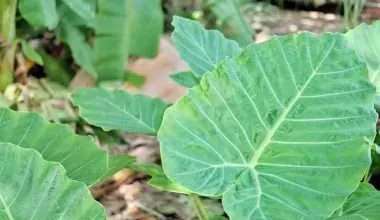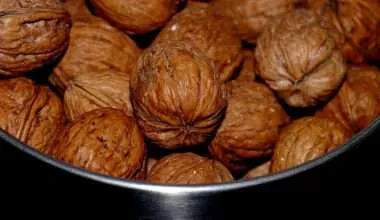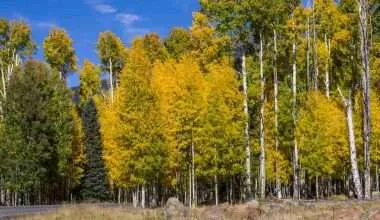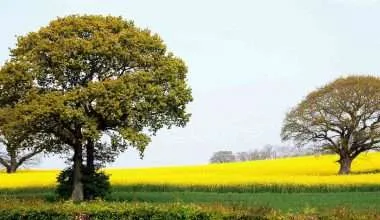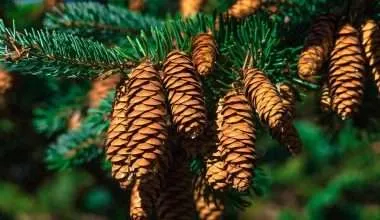Table of Contents Show
A question that often puzzles tree lovers and growers everywhere is about maples and oaks, and four ways to differentiate between them. What exactly is the difference between oak and maple trees?
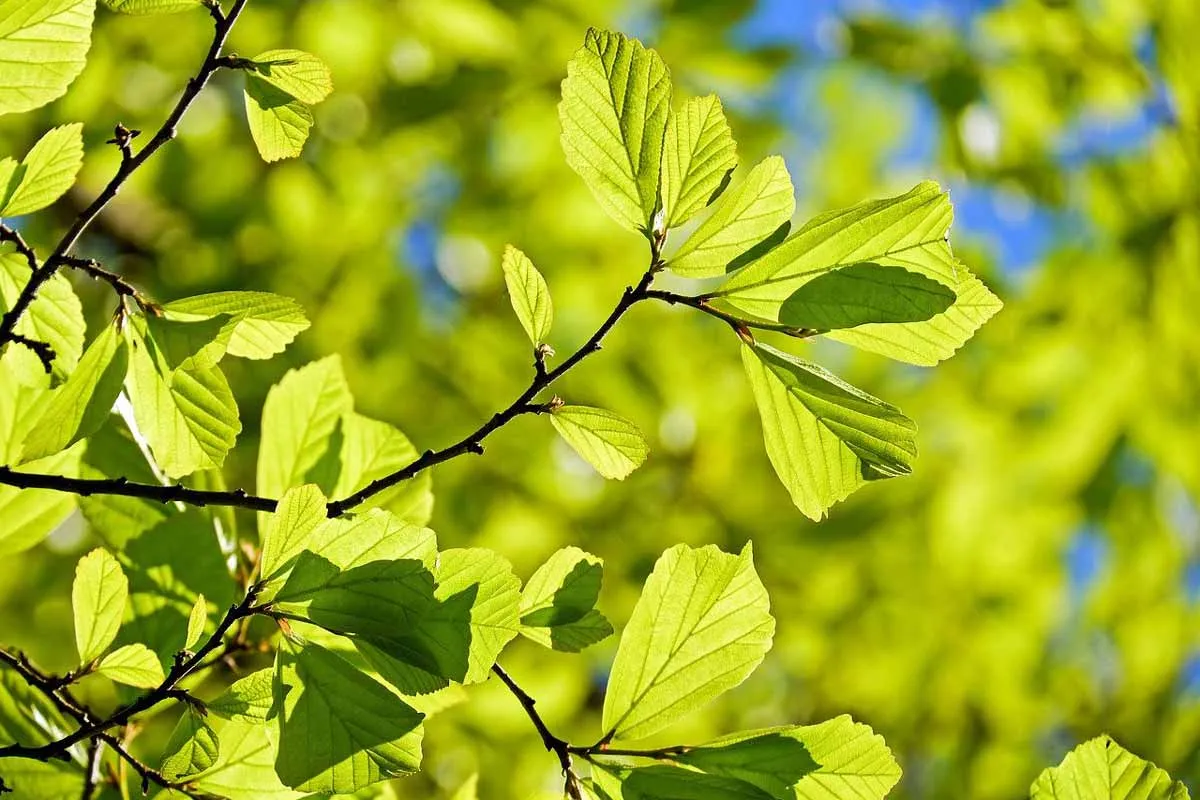
If you’re looking for a simple answer, there isn’t one. The truth is, oak trees are a type of maple tree, and maple trees are a type of oak.
They are both deciduous trees that grow in temperate climates and both trees have edible leaves. With this in mind, would it be correct to call an oak ‘maple’ or vice versa? Strictly speaking, not really.
There are quite a few differences between the two. You can take a quick look at all the differences between oak and maple trees below.
The differences between oak and maple
Is one tree superior to the other? Will you be sorry if you choose maples over oaks as your tree of choice for your home garden? Or the other way around?
The fact is that any option might be ideal for you. Based on your wants and expectations, it is entirely possible that one of the two choices will be the perfect one for you. We are here to provide you with information that will assist you in reaching a decision about the right tree for your garden.
What are Oak Trees?
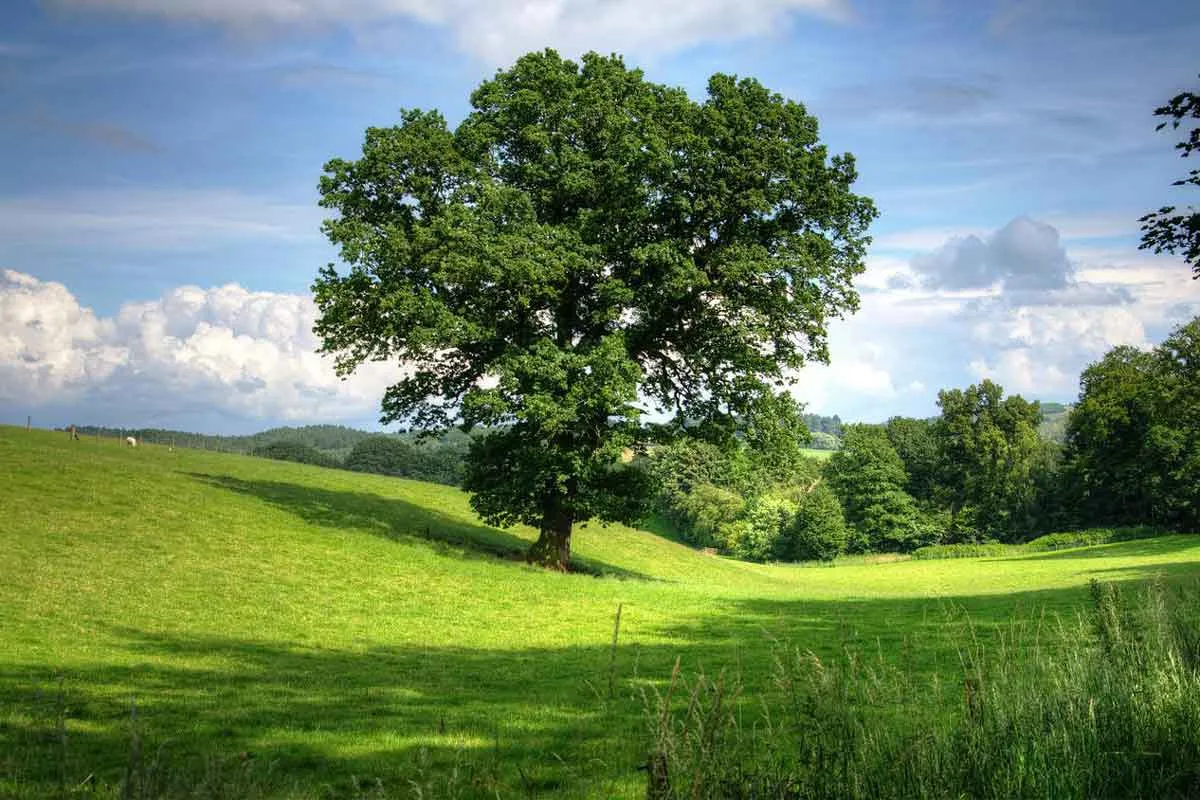
Let’s go through some of the finer nuances of what exactly classifies as an oak tree.
To identify oak trees, start by looking for the leaves, if any are present. You should expect deeply lobed leaves with either pointy or rounded tips. They just can’t make it easy for us, can they?
It’s possible you won’t get a good look at the leaves because it is winter, or the branches with leaves are too high. So, if you can’t see the leaves, look at the bark instead!
Because of the ridges and deep crevices that run down the trunk, the oak bark should have a scaly appearance. In case the tree is extremely young, the bark may seem smooth.
In this case, the tree will also have a smaller trunk and shorter overall height. This does not imply that it is not an oak tree; rather, it is not yet completely developed.
The bark may be pale silver in color, but it can also be black. Knowing the color of the bark, therefore, may not be as useful in this circumstance.
The fruit of an oak tree, particularly the acorn, is more frequently referred to as a nut. Humans may consume these nuts just like any other nut if they are properly cooked!
These key characteristic features are what may be used to identify oak trees. Generally it is comparing these features to those of other trees that helps us to identify and compare trees. Using these you may be able to decide which tree is more suitable for you.
What are Maple Trees?
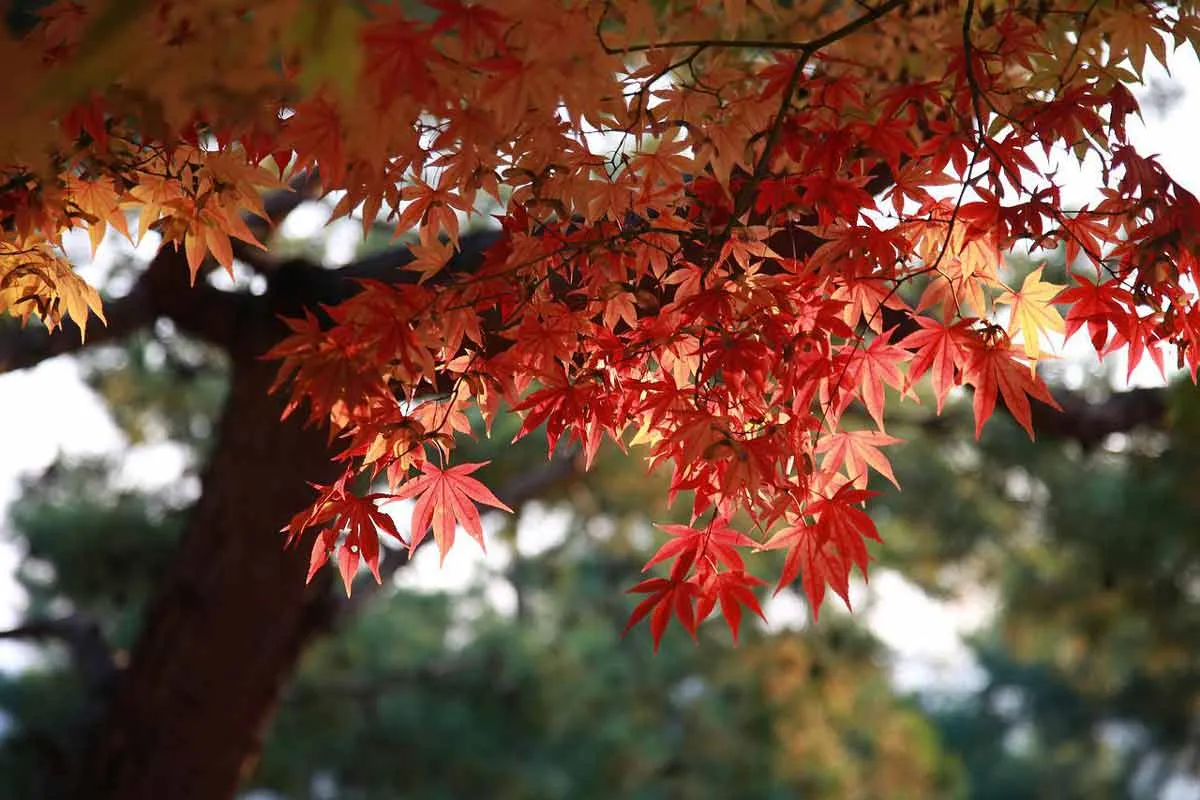
We’ve already discussed recognising an oak tree in brief, so let’s move on to maples before we focus on detailed differences between the two species of trees.
The leaves are the strongest sign of maple tree identification. Maple tree leaves contain three to nine lobes, and some have pronounced veins. These veins are more commonly referred to as petioles. Serrated lobes will be found on several of these leaves.
All of these indicators (number of lobes, overall shape of the leaf, serration, and indentations on the leaf) work together to help identify the tree. These indicators may even be used to identify the exact subspecies of maple you are dealing with. After all, even maple trees come in various kinds.
Maple trees’ leaves change color in the autumn months. Shades of crimson, yellow, burgundy, and orange are commonly seen. Sometimes all of these hues coexist in a single tree! This makes the tree quite a sight of various contrasting colors.
Maple trees’ leaves have a dark green tint throughout the summer and when they come back in the spring. They produce winged seeds as their fruit. These are sometimes referred to as helicopter seeds. These seeds are quite an enigma themselves.
Fun Fact About Maples
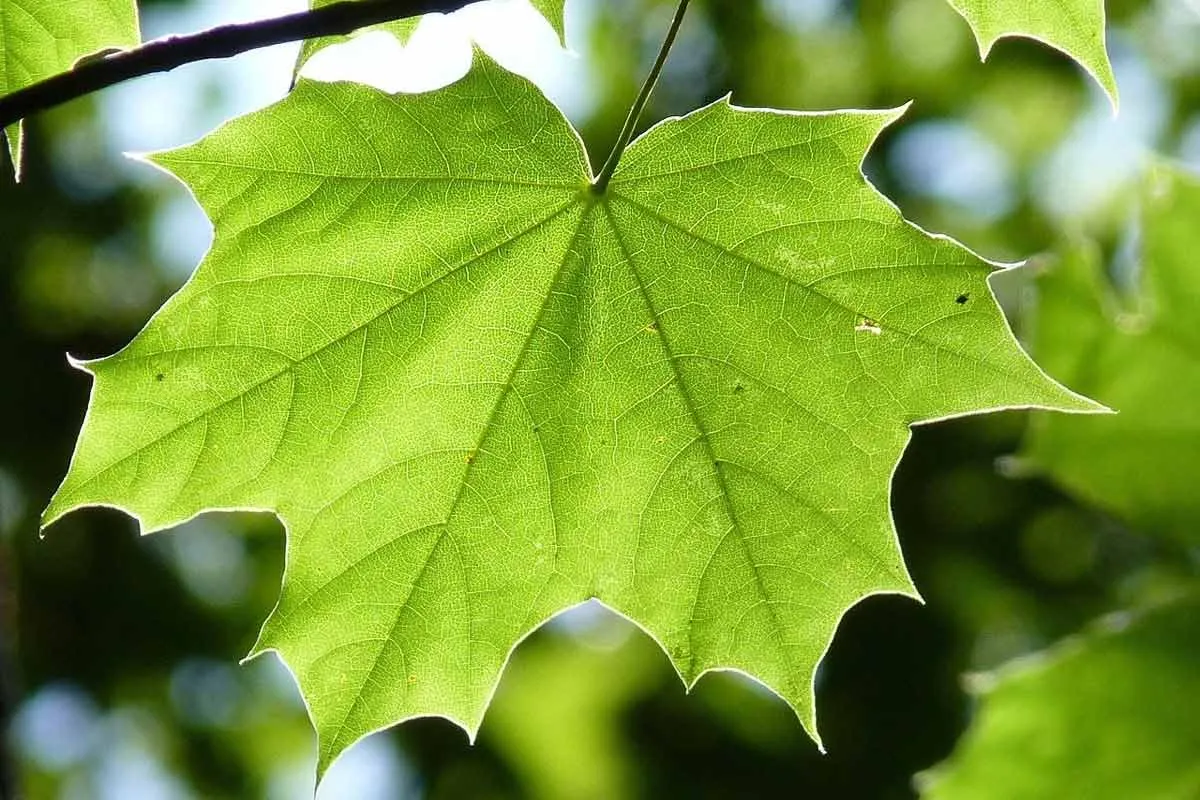
People can consume samaras, which are nut-like fruits. Unlike acorns, they may be plucked directly off the tree and are reported to be sweeter when done so rather than being collected when the tree releases them naturally.
Finally, the very obvious identification marker for maple trees is that they generate sap. This sap is of the utmost importance as the essential basis of maple syrup. While the sap is quite a treat when processed into maple syrup, it may just be a drawback raw. This is why depending on your needs, you may have to decide whether the sap will be a positive or negative feature in your garden.
These are the basic characteristics that define maple trees. Using these gives you the adequate tools to identify a maple tree and distinguish it from other similar trees. We will be focusing on all these features to thoroughly distinguish between oak trees and maple trees.
Differences Between Oaks and Maples
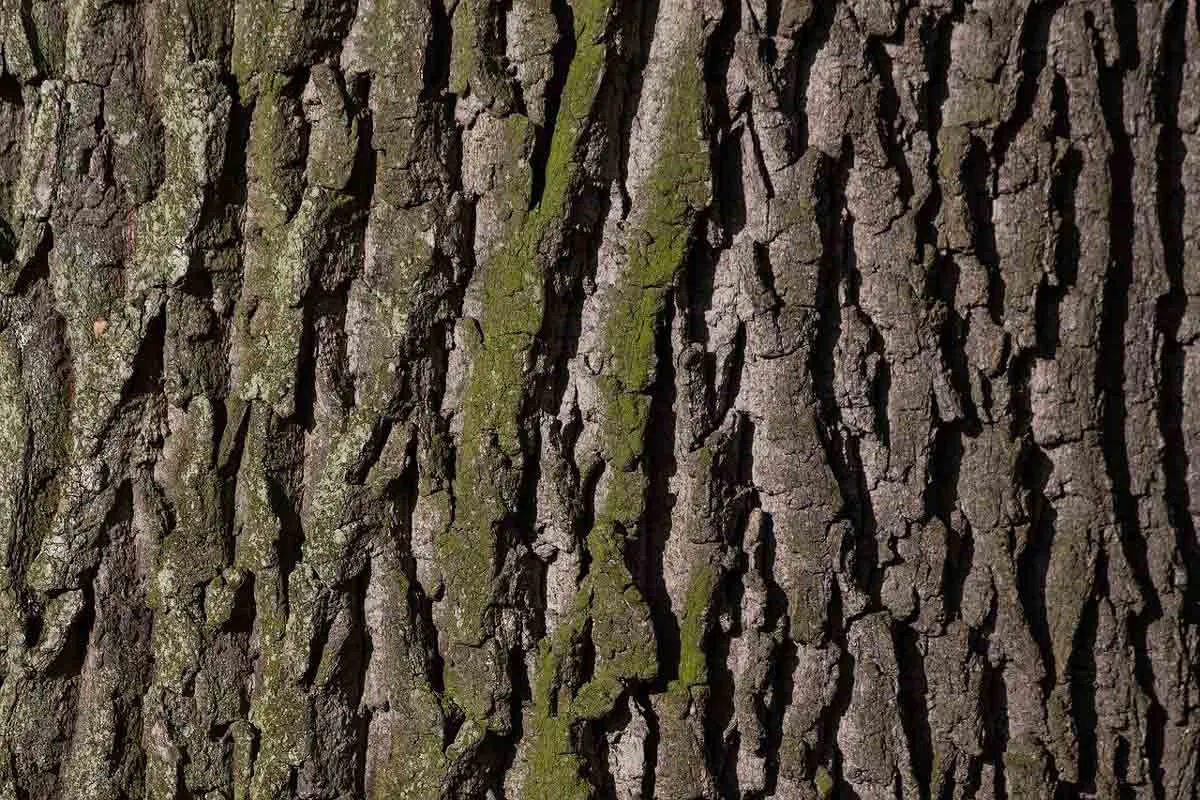
There is no doubt about the fact that every tree is unique. This uniqueness may be based on its fruit, leaves, bark, or even its capacity for growth or ability to adapt to harsh surroundings. Every tree has different growing conditions and perks.
Some trees thrive in the presence of water, whereas others do not. There are several elements that contribute to the identification of various species and their appropriate offshoots.
However, you may be more interested in the distinctions between the trees themselves, rather than the tiny intricacies that may be debated for hours. It is these finer details that are often used to categorize various tree species.
Whether you’re searching for lumber, a new shade tree for the family backyard, or anything to make your company more appealing to consumers as they enter through the door, understanding what you’re getting is important.
Trees are nature, but they are also a product. This is why it is absolutely integral to have all the necessary information so you know what you are getting into. These minute differences may just help you decide what product is real and what is fake.
In order to learn how to differentiate between oak trees and maple trees, read on the intrinsic differences between the two trees.
1. Difference in Hardness
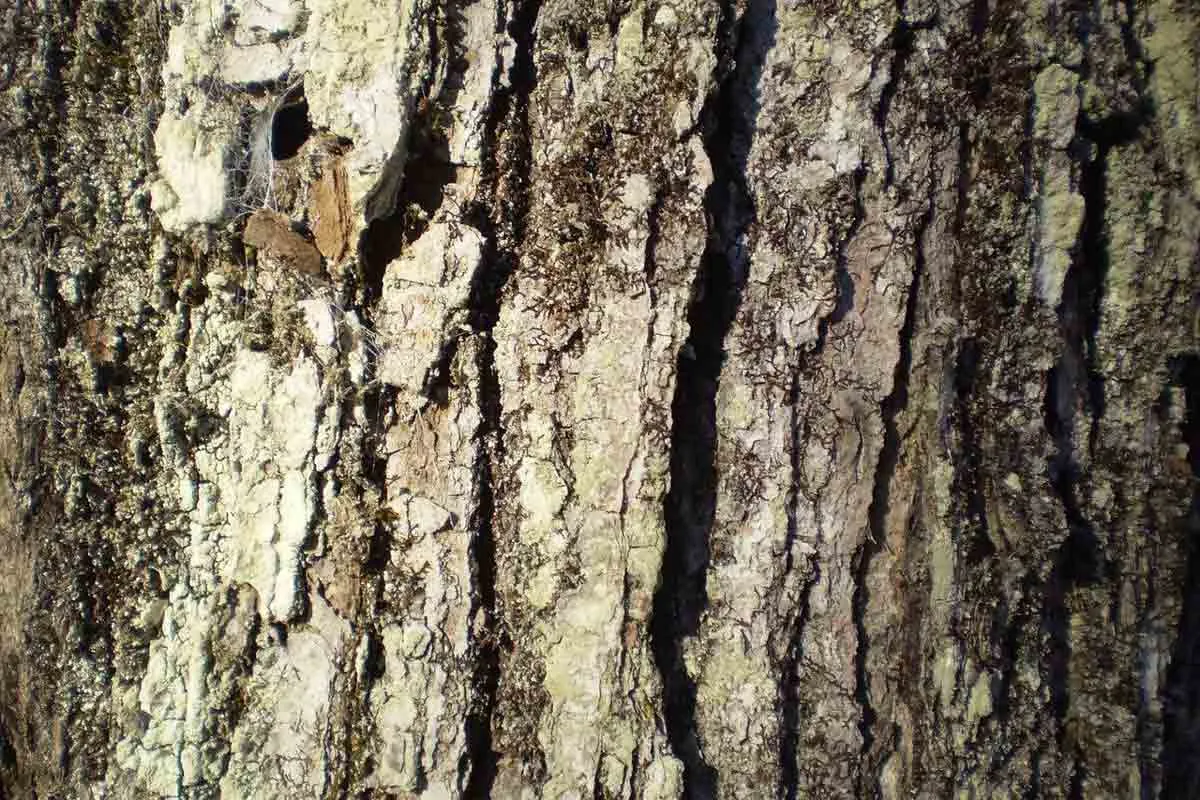
Oak and maple both belong to the hardwood family, although maple bark is comparatively harder than oak. If you’re using the wood for furnishings that require thinly cut sheets of the wood, oak bark’s more stable than maple. These could include products such as flooring or formica sheets for furniture.
However, if your only aim is to grow the tree in your yard, then honestly, it doesn’t really matter which tree you choose. They will both be wonderful additions to your home garden and will provide the perfect shade on a hot day.
The real risk factor is for home or business owners who would like to use one type of hardwood or the other for more commercialized purposes.
According to the Janka hardness scale the Red Oak tree ranks at 1290 and the White Oak tree comes in at 1360. The maple, on the other hand, ranks at 1450 showing that the maple bark’s, quantitatively, harder than other oak types.
2. Difference in Size
Maple trees come in a far wider variety of sizes than oak trees. Most maples reach a height of 10-45 meters, which corresponds to roughly 35-150 feet. Other subspecies of maple trees tend to grow much less. At times a maple tree may just barely grow 10 meters. It may seem like a bush even due to the numerous little trunks sprouting out at ground level.
Due to some maple species being shrubs, their mature heights can grow as low as 8 feet. This modest size can enable these smaller maples to be able to grow in pots, even if only for the first few years of their lives.
Small oak trees can grow to be 6-9 meters tall, or 20-30 feet, whereas the larger oak trees can grow to be 30 meters tall, or 100 feet. Whereas maple trees have the largest spectrum of growth, oak trees are recognised for something different.
Oak trees exhibit substantial development not just in height but also in width. Everything from the roots to the topmost branch is likely to grow distant from the center of the tree. Maple trees of comparable size would not have the same lateral development. Keep this in mind if you want to squeeze a tall tree onto a tiny plot of land.
3. Difference in leaves
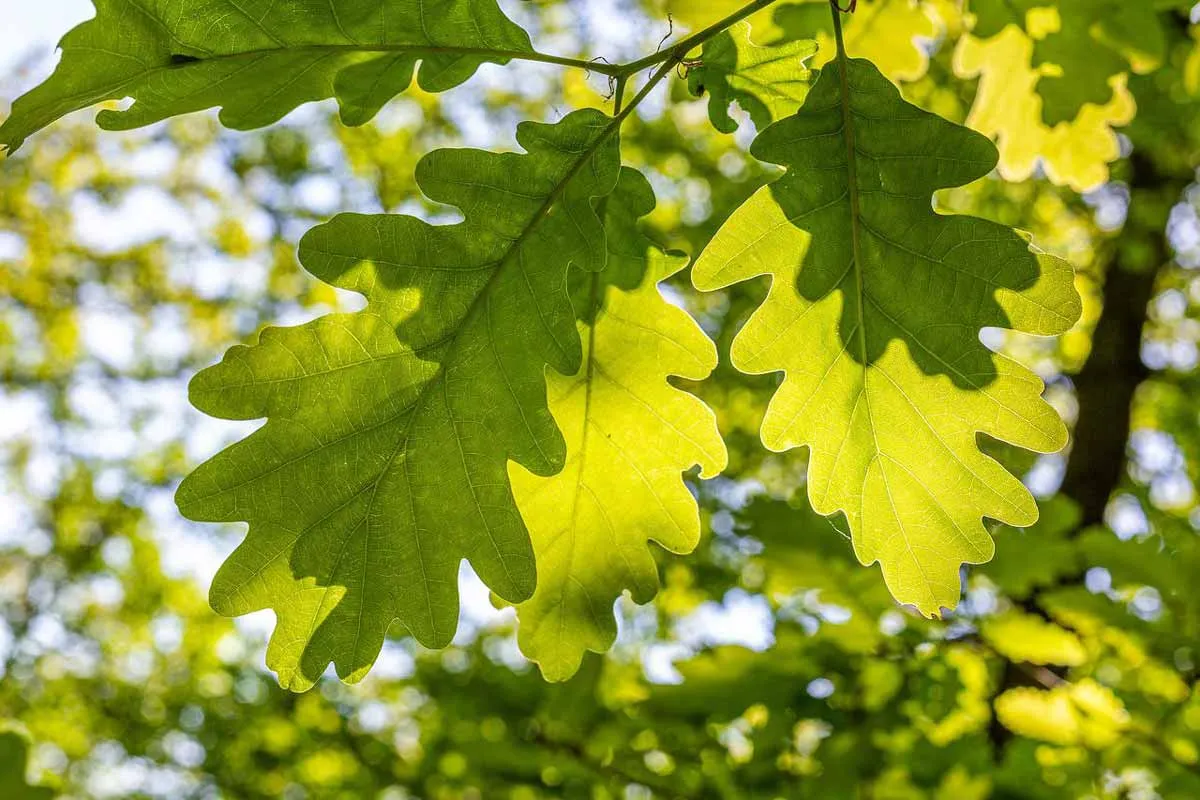
One of the most essential characteristics of a tree are arguably its leaves. During the cooler months of the year, they transform the tree into a stunning sea of color. In the winter the leaves often fall off. All these and more are characteristics that help determine what tree the leaves are growing on.
The chemical makeup of the leaves themselves can be linked to soil conditions. Remember how we said trees are better tolerant to less-than-ideal conditions? These are frequently chosen for afforestation, and studies have shown that there is a considerable variation in the leaves of trees with varying soil conditions to encourage growth.
It is knowing these intricate fine details that truly helps to differentiate between the various kinds of trees there are. Read on to see what the differences in oak tree leaves and maple tree leaves really are.
Shape of leaves
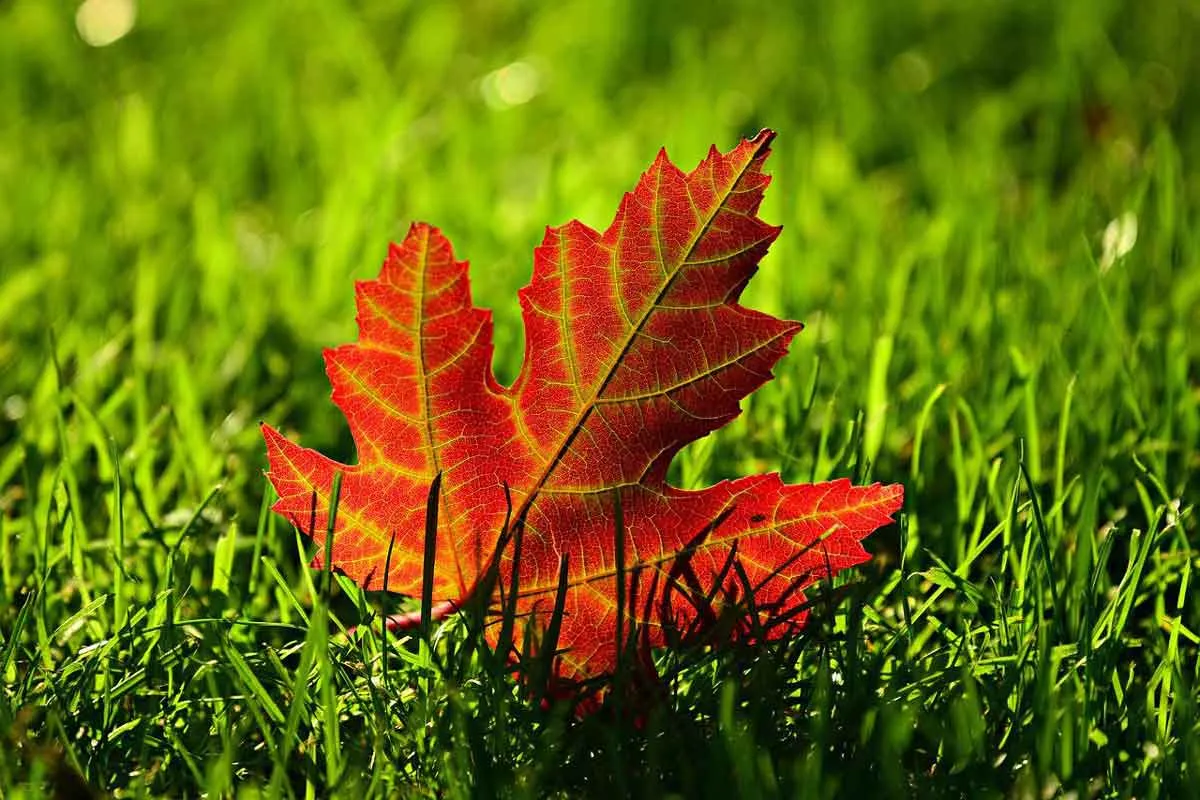
White oak leaves often have rounded tips, but red oak leaves have tips that are pointed.
Similarly, the lobe of a white oak is spherical, with no bristles protruding from the tip. This indicates that the serrations on the white oak leaf’s outer margins are similarly rounded.
The pointed lobes of red oak leaves do, in fact, have bristles at the lobe tips. This oak is more difficult to identify than its cousin since it has a wider range of leaf forms. The margins of red oak leaves might be circular and smoothly serrated, or they can be rougher and more sharp.
A maple tree’s leaves, on the other hand, are pinnate, consisting of three separate leaves that combine to form the bigger leaf we see. Individual leaves are bent but irregularly, similar to but not identical to those of a white oak.
The lobes on these rigid maple leaves are comparable to the gaps between the fingers on a human hand. They are circular, somewhat spread apart but not too far apart, and typical of a hard maple leaf.
Because of the sharper edges of the leaf as a whole, the lobes of a soft maple leaf will be fashioned more like a ‘V’ shape than a ‘U’ shape.
Leaf veins or petioles
The petiole of a maple leaf, which we see shortly before the veins begin, is lengthy and crimson. The leaf looks to be coarsely serrated throughout. One minor disadvantage is that it is vulnerable to attack by a maple petiole borer, a wasp that may not do serious harm but will surely impede the success of your maple tree.
The veins of oaks and maples are both thin and scattered across the leaves. However, oaks do not have the same characteristic petioles that maple trees do.
4. Difference in Bark
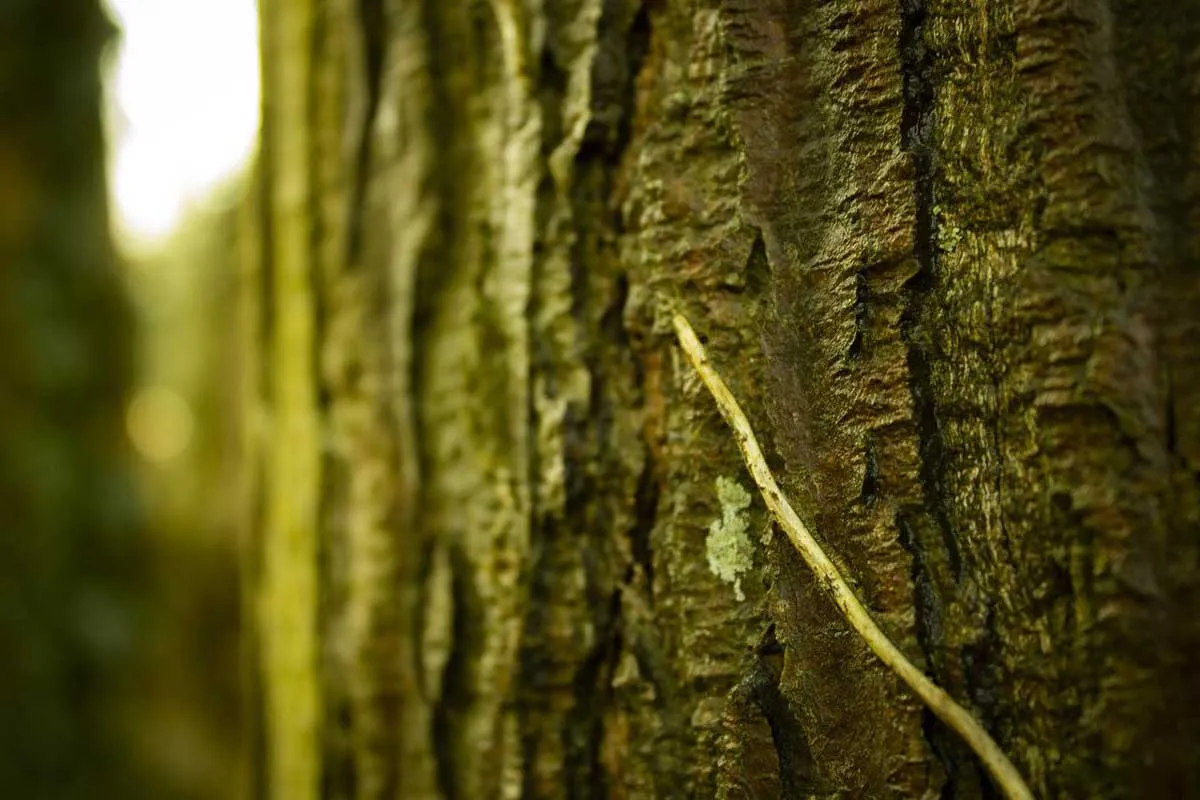
There’s a huge misconception that trees are only differentiated by the leaves. This is not always the case. At times more than the leaves, it becomes integral to look at the bark of the trees. This is usually the case when dealing with deciduous trees that shed leaves in autumn. So when there are no leaves to look at it is wise to use the bark to differentiate between oaks and maples.
During the winter months, when trees (other than evergreens) have lost all of their gorgeous leaves that ordinarily help us identify between them, bark is an excellent, relatively straightforward, classifier of tree species.
That’s all well and good, but what distinctions in bark may be relevant to us?
Bark Shade
Hard Maple often has a lighter and more uniform hue across the trunk and branches. Soft maple, on the other hand, is often a deeper tint, with hints of brown, red, and even gray at times.
In contrast young oak trees have a silvery brown appearance, however older oak trees show a shift in bark color. Of course, it depends on the species, but the bark of some white oak kinds can turn a light gray. Red oak variants, on the other hand, can take on a very dark, nearly black appearance at times.
This is one of the reasons it is difficult to make ‘this’ vs. ‘that’ comparisons when trees have so many species and many more variants within them. It actually is ‘this entire category of plant life’ vs. ‘another, but related, full category of plant life.’
Bark Texture
A juvenile red maple’s bark may be smooth and unbroken, as opposed to the fractured and rougher bark of, for instance, a northern red oak.
The scarlet oak, which has some vertical fissures and seams in its generally smooth bark and looks more like a juvenile red maple than a northern red oak, would fall somewhere in the center.
The bark of young oak trees is often smooth, however this may not be true of all varieties. The bark of these trees will grow increasingly fractured with deep ridges along the bark as they develop.
However, the bark of maple trees at the same age would in most cases be relatively smoother. Maple trees have far fewer fractures and the bark is generally unbroken.

